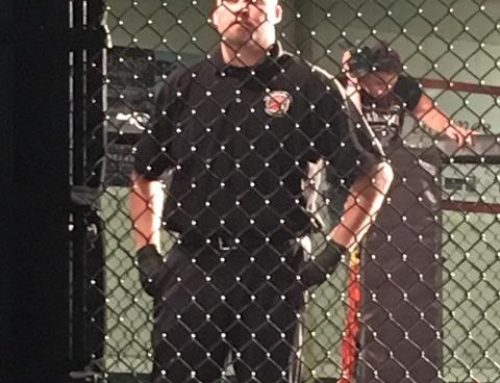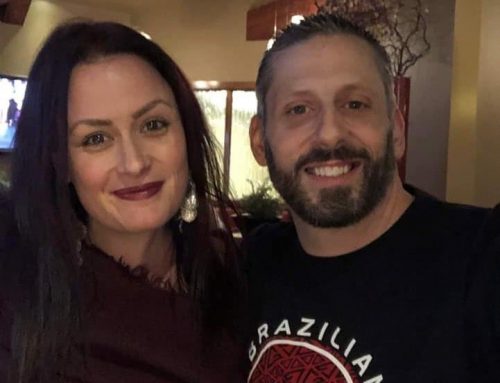For the last few years the issue of weight cutting in MMA has been at the forefront of many MMA news articles. We have seen videos of fighters crying in hot bathtubs, barely able to move. We have seen fights canceled at the last minute due to kidney issues, fighters collapsing and in the worst possible scenario……fighters dying. So this begs the question, “Why risk it?”
Most fighters will tell you that they cut weight so that after they weigh in they can rehydrate to a level that will give them a weight and possible strength advantage over their opponent. Other fighters will say that the weight cut helps them with their mental toughness and that helps them prepare for the upcoming battle.
Cutting weight has become such an accepted culture that many fighters ignore the risks of doing so, figuring that some water, electrolyte replacement or an IV will solve the problem even though IV rehydration is now illegal. Here is why extreme weight cutting makes no sense.
Fighters need to consider the damage to their bodies during extreme dehydration. Liver and kidney function is affected, sometimes permanently. Imagine taking a shot to the liver which is already in distress. Brain and spinal fluid is depleted for up to 72 hours regardless of rehydration efforts in that time frame, making the risk of concussion more likely. None of these things suggest that a fighter is training for longevity in this sport.
A weight drop during training will happen naturally as fat and calories are burned and a proper diet is maintained. The body will naturally fall into its peak fitness with proper cardio and strength training. These are lessons that other sports such as wrestling have learned. In wrestling, athletes weigh in at the beginning of the season and their weight drop is monitored throughout periodic weigh ins. If the athlete is found to have cut too much weight then he is disqualified from competition. This is why wrestlers can make weight multiple days in a row without putting too much stress on the body. The concept of better weight management and common sense weight class selection is evident in UMMAF and IMMAF competition were athletes must weigh in everyday for tournament competition without a weight allowance. This gives athletes a moment of pause when selecting a weight class as they often opt to compete in a heavier class to give themselves a chance recover from a previous days competition.
Another argument against weigh cutting is the weight in which a fight takes place. For example, if two fighters weigh in for a fight at 145 pounds, but by the time they step into the cage they weigh 155 or 160, can we really say that the fight was contested in the 145 pound division? Common sense would (or should) say no.
So how do we fix this? Unfortunately there is no clear cut answer. A few state commissions such as California have stepped up with a 10 point weight cutting rule that tests for hydration levels and percentage of weight drop. Other promotions have started official weigh ins the morning on the day prior to competition to give athletes time to rehydrate and recover better. This begs the question, how much weight have you cut unsafely to need this amount of time?
A solution has been floated to have fighters step on the scale right before they step into the cage to ensure a fight takes place within a specified weight class. This could make a fighter think twice about being depleted when he steps into a cage and force them to think about fighting at a more natural weight after a training camp. Opponents of this still state that we risk fighters still cutting excessive weight and fighting dangerously depleted of fluid and risking serious injury or death.
So who’s responsibility is it to ensure fighter safety? The fighter? Coach? Sanctioning organization? The answer is all of them starting with fighters getting educated and using a bit of common sense. Fighters must understand that they are ruining the same bodies that they want to compete with by making stupid weight cutting decisions and picking weight classes that require extreme and unsafe weight cutting measures to attain. The role of the coach is just as important because they are the first in line to keep a fighter safe. If a coach notices a fighter cutting too much weight, he must stop the process and make sure the athlete understands why this is a bad idea. The scary part of this is that we have seen coaches at the highest levels of the sport facilitating unsafe weight cuts, disregarding the safety of their own fighters. Next its the sanctioning or regulating body of the event. If an athlete or a coach cannot be counted on to make common sense decisions regarding weight cutting, then is is up to these organizations to stop the athlete from competing. The bottom line is sacrificing your liver, kidneys, brain or even your life isn’t worth it regardless of what anyone tells you.
Obviously if you are an athlete that weighs in the 300 pound range with 30% or more body fat then you have more weight that you can lose…….properly. This article is not to suggest that someone in that category not try to lose weight commensurate with their height and recommended body fat standards so long as the weight cut is managed properly.
The next argument that we need to touch on is the most most ludicrous. “If grown adults want to cut that much weight unsafely then who are we to say no?” Here is the answer. We as regulators should be saying no. Regulators are charged with not only enforcing rules but we also need to be cognizant of the perception of the sport to the public. If the public continues to hear about injury and death due to dehydration and extreme weight cutting, then the popularity, participation and viewership of the sport will decline and fighters will have less opportunity to compete. So understand this, bad weight cutting practices not only hurt you, they hurt the sport as a whole, the sport you claim to love an respect. Change starts with you, the athlete. Lets make it happen!
-Written by Ryan Brueggeman
Ryan Brueggeman is the UMMAF Vice President and National Director. He also serves as an event regulator and as a veteran referee of 18 years in several combat sports after a competitive wrestling and martial arts career which gained him first hand experience in the good and bad of weight cutting.






